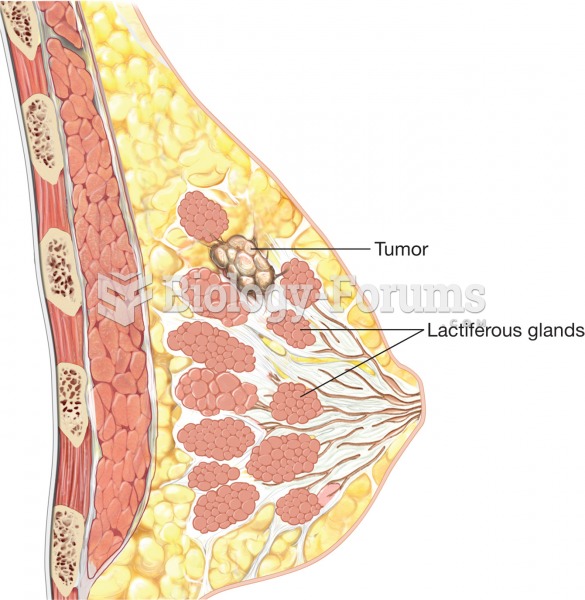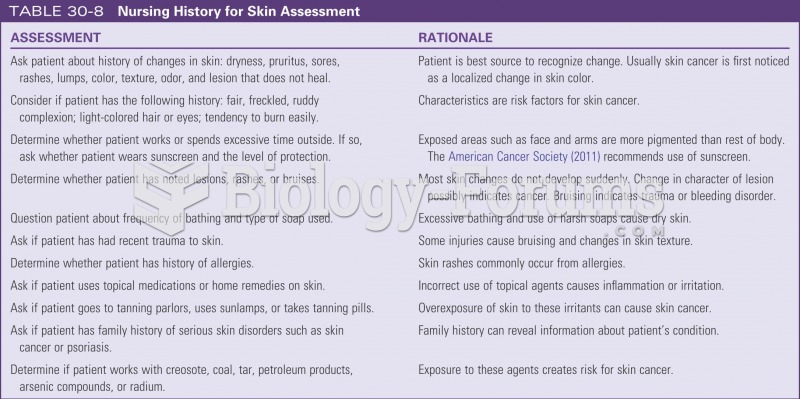|
|
|
If you could remove all of your skin, it would weigh up to 5 pounds.
Certain topical medications such as clotrimazole and betamethasone are not approved for use in children younger than 12 years of age. They must be used very cautiously, as directed by a doctor, to treat any child. Children have a much greater response to topical steroid medications.
The National Institutes of Health have supported research into acupuncture. This has shown that acupuncture significantly reduced pain associated with osteoarthritis of the knee, when used as a complement to conventional therapies.
People about to have surgery must tell their health care providers about all supplements they take.
There are 20 feet of blood vessels in each square inch of human skin.







